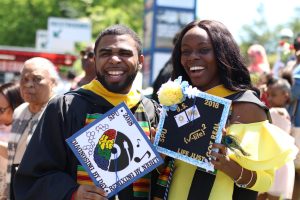Deadlines are often announced annually.
Detailed Descriptions and Comparison
The following table provides a comparative overview of the scholarships, highlighting key differences in application deadlines, required documents, and funding amounts. It’s crucial to note that specific details may vary based on the year and scholarship.
| Scholarship Name | Application Deadline | Required Documents | Funding Amount |
|---|---|---|---|
| Google Anita Borg Memorial Scholarship | Typically Spring/Early Summer | Academic transcripts, Statement of Purpose, Letters of Recommendation | Variable, covering tuition and living expenses |
| Gates Cambridge Scholarships | Generally Fall | Academic transcripts, Personal Statement, Letters of Recommendation, Research Proposal | Comprehensive funding covering tuition, fees, and stipend |
| Clarendon Scholarships | Usually Autumn | Academic transcripts, Letters of Recommendation, Personal Statement | Covers tuition, fees, and living allowance |
| Oxfam Novib Scholarships | Early Autumn/Spring | CV, Cover Letter, Transcripts, Letter of Motivation | Support for tuition and living expenses |
| IAEA Scholarships | Announced annually | Transcripts, Letters of Recommendation, Personal Statement, Work Commitment | Financial support for tuition, fees, and living expenses |
Application Strategies
Crafting compelling scholarship applications requires a strategic approach, particularly for women in STEM seeking international opportunities. Highlighting personal experiences and aspirations related to STEM fields, combined with a strong demonstration of relevant skills and experiences, significantly increases the likelihood of success. This section provides detailed strategies for crafting effective applications, focusing on showcasing a candidate’s passion for STEM and international study.Effective scholarship applications require a deep understanding of the specific criteria and values of each opportunity.
Tailoring the application materials to the individual scholarship’s requirements is crucial for demonstrating a genuine interest and alignment with the program’s goals. This involves meticulous research and careful consideration of the scholarship’s focus areas, target audience, and expected contributions from the recipient.
Highlighting Unique Experiences and Aspirations
A compelling personal statement is a cornerstone of a successful application. It should not only articulate academic achievements but also showcase the candidate’s unique experiences and aspirations, particularly within the context of women in STEM and international study. This involves reflecting on personal experiences, challenges overcome, and contributions made to the field. A strong personal statement conveys a genuine passion for STEM, detailing specific interests and demonstrating a clear understanding of the chosen field of study.
Showcasing Relevant Skills and Experiences
Demonstrating relevant skills and experiences is vital in scholarship applications. This involves carefully selecting and presenting experiences that align with the scholarship’s requirements. Quantifiable achievements and specific examples of applying skills are crucial for showcasing practical knowledge and capabilities. For instance, leadership roles, research projects, volunteer work, and extracurricular activities that showcase relevant skills and experiences should be highlighted.
Examples of Strong Personal Statements
A personal statement should resonate with the scholarship’s mission and values. It should showcase a deep understanding of the chosen field of study, articulate a clear path forward, and demonstrate a genuine passion for STEM and international study. Examples of strong personal statements might discuss overcoming challenges faced as a woman in STEM, highlighting contributions to research or projects, or outlining plans for impactful contributions to the field.
A successful statement clearly articulates the candidate’s unique perspective, emphasizing experiences and motivations relevant to the specific scholarship.



